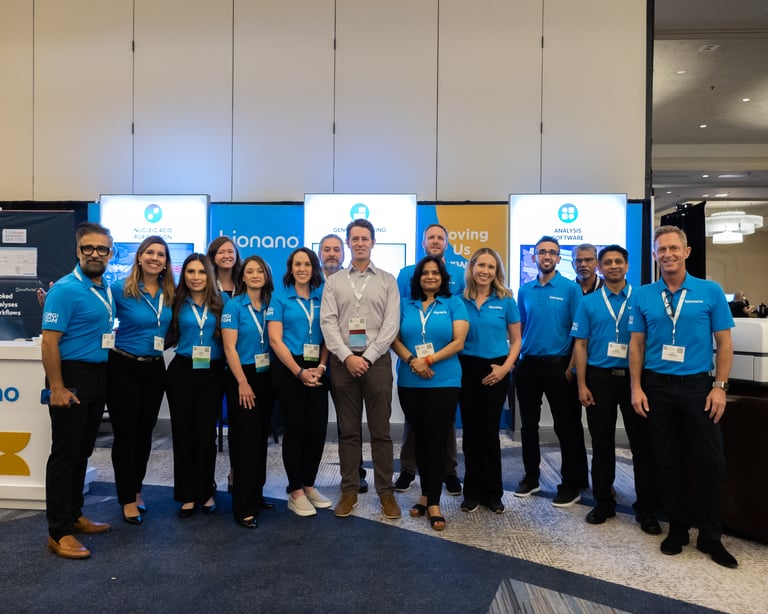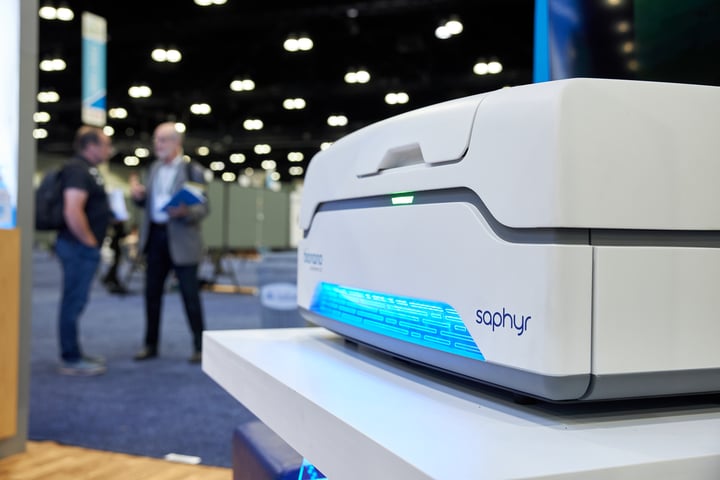Tecan uses cookies to improve our website. By continuing to browse our website, you accept our cookie policy.
Tecan uses cookies to improve our website. By continuing to browse our website, you accept our cookie policy.

Large structural variations in the genome are responsible for many diseases and conditions, including cancers and developmental disorders. Gene changes – including insertions or deletions, translocations, inversions and duplications – can lead to alterations in how and when a gene is expressed, impacting on a wide range of in vivo processes. Bionano has developed an optical genome mapping platform offering high speed, high throughput whole genome mapping to support genomic research into human disease.
Bionano was established as a spin-out from Princeton University in 2003, and now employs over 300 people across sites in the US, Canada and Europe.
 Bionano’s optical genome mapping approach is empowering discovery across all areas of genomics research
Bionano’s optical genome mapping approach is empowering discovery across all areas of genomics research
Dr Erik Holmlin, president and chief executive officer, explained: “Bionano is a genomics company focused on human health and wellness. We recognize that the application of genomics is primarily focused on driving healthcare forward, from the discovery of new drug targets to improving diagnostics and developing precision medicine approaches. Broader than that, we also see the value of genomics in day-to-day wellness, giving people access to their genomic data to help them make better health decisions and take preventive actions.”
Bionano’s technology platform, the Saphyr® system, uses optical mapping to detect structural variations in the genome. Erik added: “Next generation sequencing cannot answer all of the questions that clinicians and pathologists are seeking to address. We focus on the structure of the genome, as it is far more sophisticated than just some letters lined up like the alphabet. It really matters how things are organized in the genome: what chromosome the gene is on; how many copies of the gene are present; what kind of signaling information is ahead of the gene; and what results in it being turned on in some cells and not in others. That’s a problem that’s very difficult to solve with existing tools, and so we developed a methodology, instrumentation and the reagent kits needed to view the structure of the genome and discover the impact of structural changes on numerous healthcare questions.”
 The Saphyr system is a genome imaging tool for high throughput structural variant detection and analysis
The Saphyr system is a genome imaging tool for high throughput structural variant detection and analysis
“When we started to develop the Saphyr system in late 2014, we already had the IRYS system, which was our first generation optical genome mapper,” Erik continued. “It was a powerful system, but had many limitations, including its speed and cost, as well as its overall performance in terms of mean time between failures. However, it was a great learning platform for us to see what we needed to develop in a new instrument. It had to be faster, more easily manufacturable, cheaper for the end user, and more reliable.”
“We had the capability to develop the system in house, but needed a partner with experience in scalability and a global supply chain to support manufacturing. We were looking for a company that had experience in complicated instrumentation, as well as knowledge of medical and clinical products, because of the complex regulatory landscape in those areas. One of the things that made Paramit stand out from other providers was the sophisticated medical systems that the company was building at the time. Our COO had also worked successfully with Paramit on previous projects, and that level of confidence and trust is so important on a big project.”
The aim was to create a more reliable and affordable machine that we could deliver dependably and, with the support of Paramit, we’ve consistently hit all of our objectives.
“We undertook a majority of the design ourselves, then worked closely with Paramit to bring the instrument to life. We relied heavily on the Paramit team’s materials knowledge and supply chain awareness to ensure the system we were developing could be built predictably, in the required quantities and timelines. The aim was to create a more reliable and affordable machine that we could deliver dependably and, with the support of Paramit, we’ve consistently hit our objectives. The first generation of the Saphyr system launched in 2017 and, since then, we have made a number of incremental improvements over time, leading to the second generation Saphyr system that is currently on the market.”
Erik concluded: “Paramit has been there to support us throughout the development process, and we’ve shared a win-win mentality with the team there. They’ve taken the time to understand our design goals and vision, then we’ve worked together to turn those into the successful product available today. It’s really been a good partnership based on a collaborative approach between multidisciplinary teams striving to meet common end goals.”
To find out more about Paramit, visit www.paramit.com
To learn more about Bionano, go to https://bionano.com/